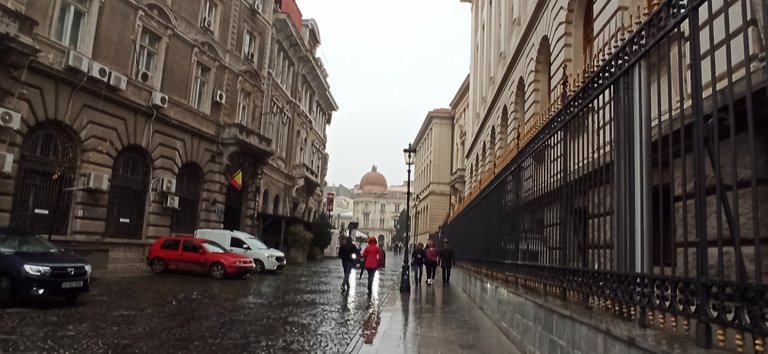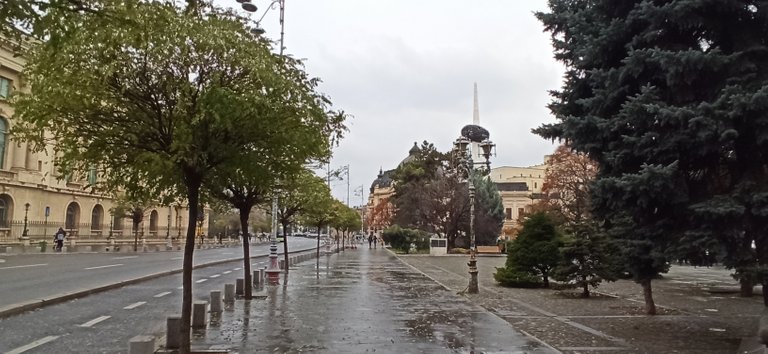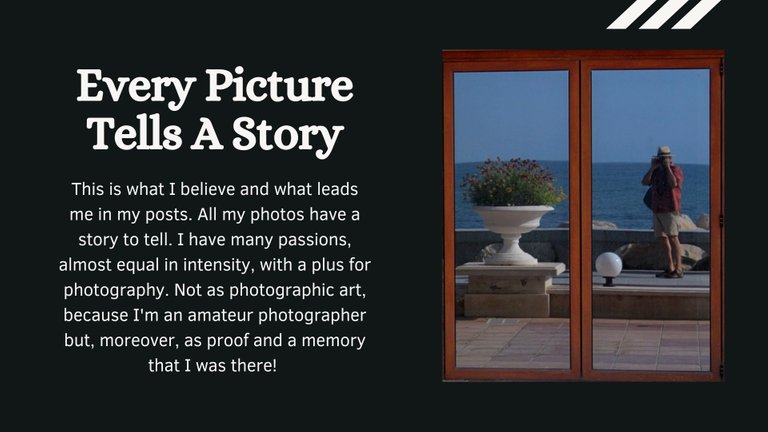This winter now looks like an unfinished autumn. This is nothing new, it has been happening for years and it proves that climate change is as real as it gets if I can even notice it in my short time in life...
My recurring walk through the center of the city Bucharest, where I live. If there is one sure thing in my life, it is walking in the city center, every Sunday, and it is not because of me. It's my wife and her inclination toward... spirituality. I'm just a companion who takes advantage of these outings to observe places and things, to add to my photo archive something new, appearing in the same unchanged urban landscape.
The novelty of this Sunday is determined by both the lack of crowds of people and cars and the ash due to a wet and cold winter day without snow. I have to call it #sublimesunday, a sublime other than what the definition of the word describes (of such excellence, grandeur, or beauty as to inspire great admiration or awe), a personal sublime given by the attraction I have solitude, sadness, lack of color...
I dedicate this post to a few statues we met on our walk, at first I didn't care for them but then I started thinking about what they convey to the viewers... actually to me, as I only know what I'm thinking.
University Square, one of the most famous in the city, so called because of the University of Bucharest.
The University of Bucharest (Romanian: Universitatea din București), commonly known after its abbreviation UB in Romania, is a public university founded in its current form on 4 July 1864 (158 years ago) by a decree of Prince Alexandru Ioan Cuza to convert the former Princely Academy into the current University of Bucharest, making one of the oldest modern Romanian universities.
In documenting this post I learned something I didn't know and that has value to me. I learned that the University was founded in 1694 and I also learned the motto they have chosen: Virtute et Sapientia (Virtue and Wisdom). Impressive for a small and insignificant country like Romania.

There are 4 statues here, three of men of culture and one of a prince, warrior, and adventurer, who achieved the first union of the Roman provinces in 1600, Michael the Brave. Of course, the most spectacular is the equestrian statue of Michael the Brave, by Albert-Ernest Carrier-Belleuse, inaugurated in 1874. The disadvantage of the men of culture was that they didn't know how to horse ride!

Leaving the university square, on the narrow streets nearby, occupied by all kinds of terraces and cafes. The ash is broken only by the still golden leaves of the birch trees.


Here we can see not a statue, but a monument, a quite living monument. The Russian Church, the only church of its kind in Bucharest. The specific architecture, with rounded and gilded towers, attracts attention... and that's all.

The first winter constructions have appeared. The Igloos! Not made of ice, but plastic. Terrace owners are hoping to get more customers on these rainy days.

In the almost deserted town, because it's Sunday and because it's raining...

... I met groups of people. Tourists. In Bucharest, in the center, on Sundays, they speak Spanish!

The winter holidays, the end of the year celebrations, are in preparation. I can say that only these festive decorations still color the city. Shop windows...


...or the entrance to a famous hotel, The Marmorosch Bucharest, Autograph Collection.

An interesting concept, nature and magic brought into the middle of the city.


After this interlude to celebrate... celebrating the light and color of the end of the year, I return to my statues. To the solitude of the statues. The statues in another important square in the city, Revolution Square!

There is a big and important link between the two markets I am writing about here. We can say that the Revolution in Bucharest, in 1989, started in University Square, where the first people died, and ended in Revolution Square, with the flight of the communist dictator Ceausescu. A flight that ended in front of the firing squad, on Christmas Day!

The most important monument dedicated to the Romanian Revolution bears the name: Memorial of the Renaissance - Eternal Glory to the Heroes and the Romanian Revolution of December 1989. It is a controversial monument, criticized both for its shape seems copied from other monuments, and for its enormous cost (about eleven million dollars). I must admit that I am not a fan of this monument either.
There is however, very close by, a monument that is much more to my taste, although I don't understand the significance of that tree without branches and leaves next to that broken and rebuilt from pieces man.

It is the statue of a Romanian politician from the beginning of the last century, Iuliu Maniu.

Located in Revolution Square, the Statue of Iuliu Maniu is shown as a broken man with an unbreakable spirit.
Iuliu Maniu was the prime minister of Romania on three occasions between 1928 and 1933. Because he was an opponent of Soviet influence in Romania, after the Second World War, in 1947, he was sentenced to life imprisonment with hard labor by the Communist Regime. As it was expected according to his age and to the prison conditions, he died in prison six years later.

And opposite is the bust of Corneliu Coposu, disciple of Iuliu Maniu. He served 17 years of hard imprisonment during communism. After leaving communism, Corneliu Coposu entered politics again but was met with disbelief by the population indoctrinated by the lying history they learned in school. After many years we managed to see the extraordinary quality of this man but it was too late for him and for us.
There was nothing left to do but... a statue!

I hope you notice the small bust of C.Coposu, between the Kretzulescu church, built in 1700, on the left, and the Royal Palace, on the right.
The most representative statue in this square is, of course, the equestrian statue of King Carol I of Romania. The first king of Romania, the man "guilty" of starting the modernization of this country.

Of course, you have to look for the King's statue for a while. To the right, with the University Library behind and the Royal Palace in front, both buildings were erected by the will of this king.

Here is the statue covered in lights during a festival.
I wanted to show some of the statues and monuments in Bucharest, in the city center, an area sought by the increasing number of foreign tourists in this city. My walks through these places always bring me close to all the statues shown here. I realized today that I often pass by these monuments without noticing them, having been used to them being there for decades. I realized that these statues are, in fact, alone. Even if hundreds of people, with their thoughts elsewhere, walk past them. In order to revive them, we have to "talk" to them, that is, pay attention to them and think about their meaning.

Traveler to the city where I live is what I've been doing for many years, that is, I try to show what is more interesting, more important, and not necessarily what is more beautiful in the city where I live. I don't bypass the ugly places or the sometimes uncivilized behavior that I try to explain through the history of these places but I focus especially on what I think a visitor would like to see when he arrives for the first time in Bucharest. Bucharest, the capital of Romania, a member country of the EU, is located at the crossroads of Central, Eastern, and Southeast Europe. I'm going to use this tag #traveltomycity and then put these places on the Pinmapple map for those who want to discover them more easily!




